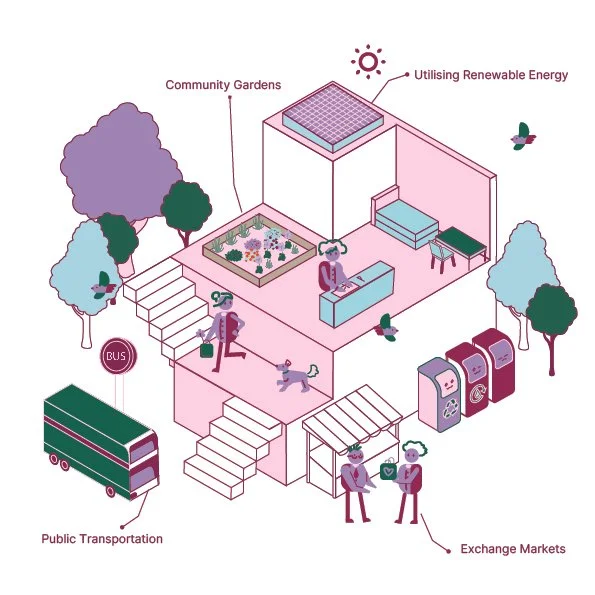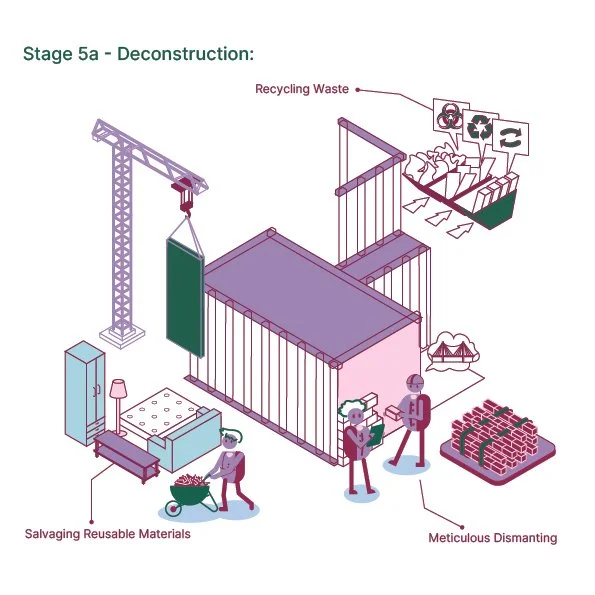LIFT: Building Circular Economy in Design
We at Love Design Studio are always looking to engage with the wider design community to highlight innovative work, exciting new projects, and incredible talent in the industry. Recently, we were thrilled to be invited by LIFT (Leading Inclusive Futures through Technology) to collaborate on their latest educational programme, Design Futures.
LIFT is a partnership between four London Boroughs to promote education and entrepreneurship to build a more inclusive knowledge economy. They launched their new programme this year to promote practical work experience and skills training in graphic design. This 4-week course held at the Capital City College Creative Skills Academy saw students engage with local design agencies and creative businesses, including ourselves, to build out their portfolios by working on hypothetical design briefs.
We were invited by LIFT to write a graphic design brief for a new housing development project and work with their students. The process involved providing feedback to the students on each of their designs and refining their ideas to resonate more closely with the demands of the industry. At the end of the programme, we interviewed each participant and selected one of them to join us for an 8-week internship to continue developing their practical skills in the field of design.
The students involved in our brief are Maryam Syed, Tingwei Xie, Jami Lee, and Joshua Asare-Asante, supported by their tutor Bee Veronica Moore from Wittydittydesigns.
Read more below to hear about this exciting new programme.
The Brief: Circular Economy in the Built Environment
With the Greater London Authority currently leading the charge on promoting greater levels of sustainability in the city’s housing sector, particularly the importance of more circular construction practices, the brief we presented to the LIFT team reflected exactly that. Here, we challenged the participants to bring the journey and life cycle of a multi-storey residential building in London to life through a series of graphics.
Envisioning a residential building in the streets of London constructed with all the principles of circular economy - reimagining waste as a valuable resource through recycling and reuse - the task was to present a series of engaging graphics that illustrates all the stages of the construction life cycle.
Participants were tasked with creating 7 separate graphics for the 5 stages outlined below, and one larger graphic that represents the entire process.
Architects’ Design: A team of architects ideating and sketching out their design concepts to construct a new sustainable residential building in London.
2. Material Sourcing: The design team source materials from more sustainable suppliers, whilst also reclaiming materials from previous construction projects that have come to the end of their life cycles. How can we give materials a second chance?
3. Construction Phase: Contractors will begin construction as sustainably as possible, including minimising waste through not over-ordering materials, avoiding or eliminating plastic waste from site deliveries, and having efficient waste management on site.
4. In-Use: Once a building is occupied, sustainable practices must be carried through to ensure it isn’t sustainable exclusively in its construction. This will include utilising renewable energy, optimising the efficiency of the building, and encouraging reductions in the amount of waste produced the residents.
5. End-of-Life Scenarios: When redeveloping the site, there are two main pathways for doing so in a sustainable and circular manner.
a) Deconstruction - As opposed to demolishing the building which produces excessive waste that goes straight to landfill, meticulously deconstructing a site maximises the extent of reusable materials salvaged for future construction.
b) Retrofitting - Conversely, the building itself could be kept intact and simply reimagined by the design team to serve another purpose. Retrofitting makes greater use of existing materials and infrastructure, significantly reducing the need for fresh resources.
Designed by Maryam Syed, Tingwei Xie, Jami Lee & Joshua
Throughout this programme, we worked with the team to iteratively build on and refine their design ideas. Starting with a series of sketches to define both the design concepts and the visual language deployed, we provided detailed guidance on each round of designs and helped participants to progress their designs. Our feedback was broken down across a series of key areas, including (i) how the buildings and human figures were represented, (ii) what content and information should be contained within each graphic, and (iii) how the focus of the image can be better tailored to maximise engagement.
After weeks of dedicated activity, the students were able to produce an excellent series of graphics that encapsulated many of the principles of both building design and circular economy. We were delighted to see the progress that the team made and the creativity they were able to exemplify!
At Love Design Studio, we want to ensure the next generation of talent are equipped with the tools and skills they need to operate in the ever-evolving field of design and construction. It is important to know that green skills can mean a lot of things, you can even be a green graphic designer! We would like to thank LIFT for inviting us to join them in this year’s programme and we hope to work with them again.







